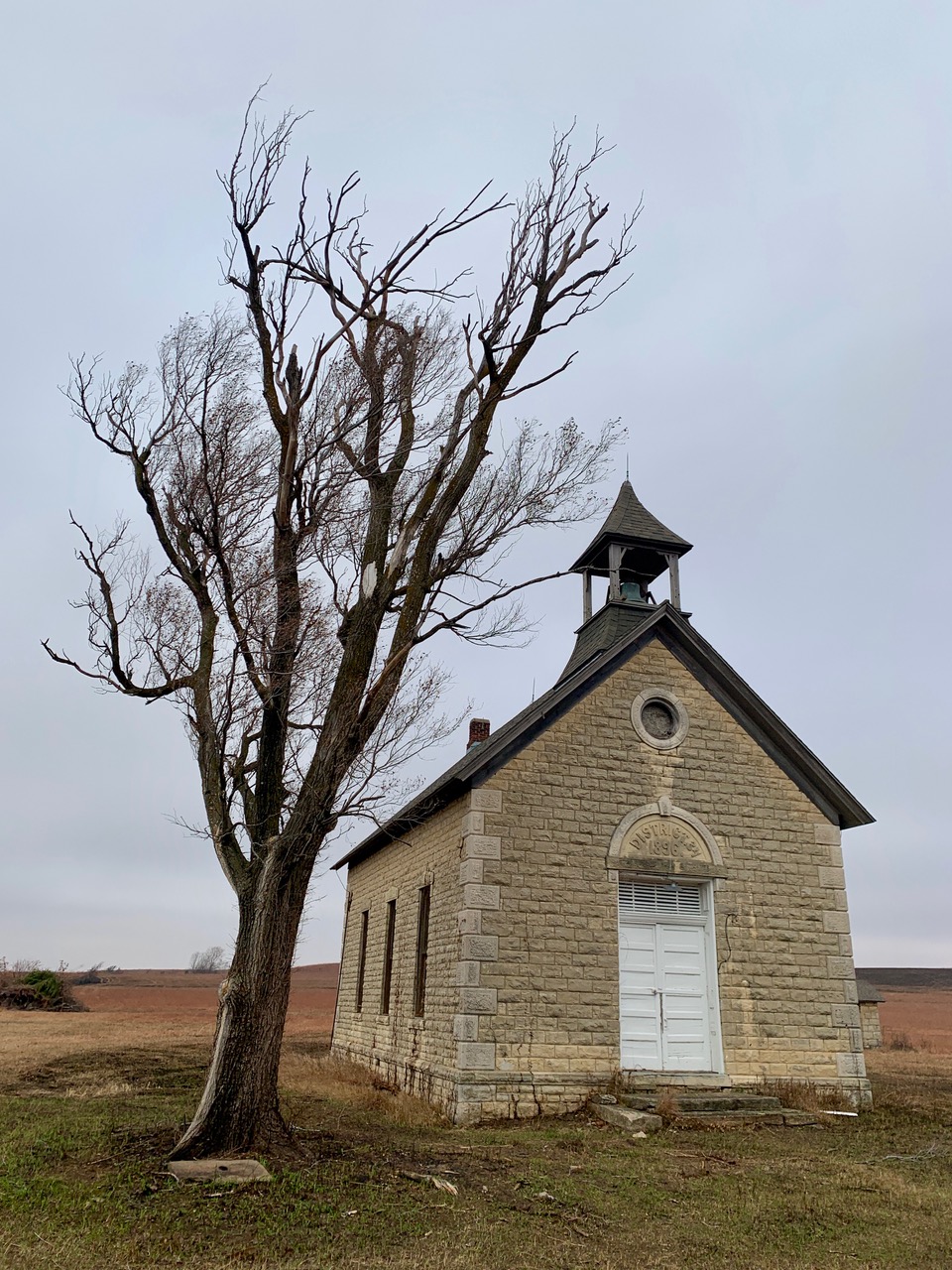Now is the time of year when thousands of leaf peepers invade New England, where forests of maple trees turn vibrant reds and oranges. The emergence of fall colors is spectacular. But a fascinating process is underway here in Kansas, too. Our fall corals are emerging.
That’s right. Corals. The fossils of corals and other prehistoric marine life can be seen poking out of limestone fences, barns and courthouses throughout our state. When the first pioneers began settling in Kansas, trees were scarce but limestone was plentiful — because the plains of Kansas were once the floor of a vast inland sea. That seabed limestone became a primary building material in Kansas, and nearly all our state’s limestone is loaded with fossils. Because limestone is softer than the fossils embedded in it, the rock erodes before the fossils do. So after a century or two of exposure to wind and rain, the surface of the limestone begins to dissolve, and the fossils gradually become more exposed. Look closely, and you can almost imagine that the ancient sea creatures are wriggling their way out of the rock.
We like to head north, up through the Flint Hills. Florence is a good place to start. Back in the 1870s, there was a huge limestone quarry here, employing hundreds of men. There are still a number of grand old limestone houses and buildings in town, including the 1884 Opera House. You won’t see “The Marriage of Figaro” there because the operas ended in 1917. But you can still enjoy the marriage of a blueberry muffin and a hot cup of coffee in the bakery on the old building’s main floor.
Four miles east of Florence is the one-room Bichet School, built from native limestone in 1896. It’s still in remarkably good shape. The schoolhouse, the two stone outhouses and the stone storm shelter are all that remains of the village where French immigrants once lived. The students all came from French families, but were required to speak English in the classroom.
Farther up the road is the Clements Stone Arch Bridge. Completed in 1886, it was proclaimed “one of the most handsome bridges in the state.” The road over the bridge was closed years ago. But if you don’t mind parking your car a few yards away and tramping through a bit of bramble, the old two-arch bridge is still a masterpiece.
Next, head up to the Tallgrass Prairie National Preserve, north of Strong City. The first thing you’ll notice is the massive three-story limestone barn, completed in 1882. But also pay attention to the limestone fences. The rocky landscape made this land unsuitable for agriculture, but it was fine for grazing cattle. Starting in 1867, ranchers were required to build fences that contained their herd. So ranchers began prying flat limestone rocks out of their land and stacking them along their property lines, layer by layer. No mortar was needed. The limestone fences were held together by gravity and friction.
“A well-built dry stone wall can remain standing for 200 years,” Paul Miller wrote in an article for the Wabaunsee County Historical Society. “In fact, a dry-stone wall will last longer than one with mortar since it will shift and bend with the natural movement of the ground beneath.”
Head up to Alma next. The sign on the edge of town says City of Native Stone, but Alma is also famous for its cheese. Grab some curds to snack on as you head south on Route 99. That stretch of highway is part of the Native Stone Scenic Byway, and it wanders alongside some of the most beautiful stone fences in the state. You’re pretty much guaranteed to see some fossils in these rocks if you get up close.
Finally, make a stop in Cottonwood Falls to admire the stunning Chase County Courthouse. Built in 1873 from local limestone, it’s the oldest Kansas courthouse still in operation. And it still looks like a richly ornamented French castle from a Disney movie.
Contact Joe Norris at Joe.norris47@gmail.com.










